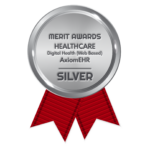Anyone who works in health care knows that a smooth <a href=”https://axiomehr.com/healthcare-revenue-cycle-management-software/”>Revenue Cycle Management (RCM)</a> workflow is absolutely essential. However, what’s meant to serve as a bridge between the clinical and business sides of care can quickly turn into a nightmare. It’s no easy task to process millions of claims, but there’s still no excuse for failing to do it properly. When patients’ physical, mental and financial well-being is at stake, clinics can’t risk making errors.
The key reason for faulty RCM is clinics’ heavy reliance on claims administrators, coupled with their poorly-performing legacy systems. Administrators are responsible for chasing claims, managing remits and tracking down payments from out-of-network patients, and their current workflow tools often do the bare minimum to make their jobs easier. In fact, more often than not, these legacy systems make the process even more convoluted. This leaves administrators saying a silent prayer that everything is coded right, which is not the way any clinic should be handling business.
With this unreliable and tedious process that currently dominates the market, it probably comes as no surprise to learn this is costing clinics substantially. According to the CAQH index, the lack of automation for claims processing costs the health care industry more than $11 billion each year. And even though most operations have some software that passes itself off as RCM technology, many EHRs are combined with multiple RCM vendors. This causes even more operational issues and introduces the problem of data silos.
On top of all of this, many companies are outsourcing operations outside of the United States, which, in turn, increases exposure to additional risk in uncertain times. And for providers, the top organizational challenge is the declining reimbursements due to value-based care and the high volume of denials. Having too many RCM providers spread out across an entire organization is arguably almost as inefficient as having no RCM at all. Remember, your RCM is supposed to work for you, not against you.
One of the most effective ways to know if your RCM workflow is doing its job is to look at it’s Key Performance Indicators (KPIs). As recommended by research from Health IT News, the top five RCM KPIs you should be monitoring include the following:
- Net days claims are in accounts receivable
- Cash collection as a percentage of net patient services revenue
- Claim denial rate
- Final denial write-off as a percentage of net patient service revenue
- Cost to collect
Because of the extreme limitations of most RCM workflows, clinics should also seriously consider using artificial intelligence to handle this side of the administrative process. This is where Axiom, powered by HiMS, comes into play. With Axiom, it doesn’t matter if a clinic is processing a few hundred claims or a few million, all files run through one easy and fluid process. So, next time your clinic sends a batch file to Cigna, you know the claims are actually being coded and processed correctly.
Axiom is able to achieve this by fixing all errors automatically without any human intervention. With Axiom, you know exactly how much revenue is coming in and which claims are going out, giving both your clinical staff and your patients some well-deserved peace of mind.
With our RCM feature, an automated claims dashboard and a system that keeps up-to-date on the latest billing correction rules and regulations, clinics also gain access to real-time patient eligibility information. We also customize your clinic’s billing and adjudication based on your daily, weekly or monthly criteria. No matter what the claim is, Axiom has the ability to process it quickly, correctly and seamlessly.
Lastly, Axiom is no stranger to interoperability. We can integrate with your existing software if your clinic only needs the RCM component, or we can fully transition your entire EHR in 30 days or less. For clinics looking to improve their cash flow assurance, contact us today to learn more. Trust us, you’ll be thankful you did.





